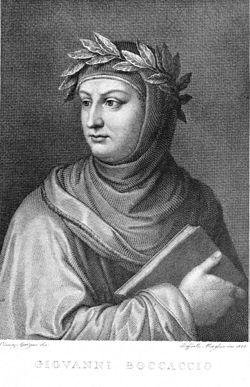"The Tale of Alatiel, the Princess who Remained a Virgin"
Introduction
The Decameron by Giovanni Boccaccio is a 14th-century collection of 100 novellas told over ten days by a group of young nobles fleeing the plague in Florence. The tales span a wide range of genres and themes, from tragic love stories to witty tricks and moral lessons.
"The Tale of Alatiel" appears on the second day, when the stories revolve around people who, after experiencing misfortune, ultimately find happiness. This particular tale is both comic and ironic, involving identity, reputation, and the disconnect between truth and social perception.
Summary
Alatiel, the beautiful daughter of the Sultan of Babylon, is betrothed to the King of Algarve. Her journey across the sea begins with high hopes but quickly turns disastrous when her ship wrecks near Majorca. Though she is rescued, she soon becomes a pawn in a series of abductions, affairs, and exchanges among men who lust after her beauty.
Over a span of four years, Alatiel is passed from one man to another—eight in total—traveling through various Mediterranean cities and courts, including places like Italy, Crete, and North Africa. Despite her high birth, she suffers numerous indignities, though she never loses her dignity or wit.
Eventually, with the help of a wise man named Antigono, Alatiel is returned to her father. They invent a story in which she was protected in a monastery the entire time, remaining untouched. The Sultan believes the tale, and Alatiel is finally married to the King of Algarve as a “virgin,” her social reputation intact.
Analysis
1. Irony and Appearance vs. Reality
The central irony is that although Alatiel has had numerous lovers, she is celebrated and honored as a virgin bride. Boccaccio satirizes the societal obsession with female chastity, suggesting that reputation, not reality, determines a woman's worth.
2. Critique of Patriarchal Morality
Alatiel’s experiences critique the double standards of gender and sexuality. While men in the story are free to act as they please, a woman's value is entirely tied to her sexual purity. Boccaccio challenges this notion by allowing Alatiel to "win" in the end—she manipulates the system rather than being destroyed by it.
3. The Power of Storytelling
The tale itself is an example of how narratives shape perception. Alatiel’s virginity is not a fact but a story—one that is accepted because it is useful and convenient. Boccaccio shows how truth is often secondary to the social function of storytelling.
4. Cultural and Geographic Diversity
The story spans a wide geographical area, reflecting Boccaccio’s knowledge of the Mediterranean world. This cosmopolitan setting emphasizes both the instability of Alatiel’s position and the complexity of identity in a world shaped by trade, travel, and political alliances.
Conclusion
Alatiel’s tale is one of The Decameron’s most ironic and subversive stories. On the surface, it seems to affirm traditional values—she ends up married and “virtuous”—but beneath lies a biting critique of those very values. Boccaccio uses humor and irony to explore themes of gender, reputation, and the fluidity of truth, illustrating how appearances often matter more than facts in society.
Ultimately, Alatiel’s survival and success are due not to her chastity, but to her intelligence, adaptability, and the power of a well-crafted lie—making this a tale not only of endurance, but also of clever reinvention.
Introduction
The Decameron by Giovanni Boccaccio is a 14th-century collection of 100 novellas told over ten days by a group of young nobles fleeing the plague in Florence. The tales span a wide range of genres and themes, from tragic love stories to witty tricks and moral lessons.
"The Tale of Alatiel" appears on the second day, when the stories revolve around people who, after experiencing misfortune, ultimately find happiness. This particular tale is both comic and ironic, involving identity, reputation, and the disconnect between truth and social perception.
Summary
Alatiel, the beautiful daughter of the Sultan of Babylon, is betrothed to the King of Algarve. Her journey across the sea begins with high hopes but quickly turns disastrous when her ship wrecks near Majorca. Though she is rescued, she soon becomes a pawn in a series of abductions, affairs, and exchanges among men who lust after her beauty.
Over a span of four years, Alatiel is passed from one man to another—eight in total—traveling through various Mediterranean cities and courts, including places like Italy, Crete, and North Africa. Despite her high birth, she suffers numerous indignities, though she never loses her dignity or wit.
Eventually, with the help of a wise man named Antigono, Alatiel is returned to her father. They invent a story in which she was protected in a monastery the entire time, remaining untouched. The Sultan believes the tale, and Alatiel is finally married to the King of Algarve as a “virgin,” her social reputation intact.
Analysis
1. Irony and Appearance vs. Reality
The central irony is that although Alatiel has had numerous lovers, she is celebrated and honored as a virgin bride. Boccaccio satirizes the societal obsession with female chastity, suggesting that reputation, not reality, determines a woman's worth.
2. Critique of Patriarchal Morality
Alatiel’s experiences critique the double standards of gender and sexuality. While men in the story are free to act as they please, a woman's value is entirely tied to her sexual purity. Boccaccio challenges this notion by allowing Alatiel to "win" in the end—she manipulates the system rather than being destroyed by it.
3. The Power of Storytelling
The tale itself is an example of how narratives shape perception. Alatiel’s virginity is not a fact but a story—one that is accepted because it is useful and convenient. Boccaccio shows how truth is often secondary to the social function of storytelling.
4. Cultural and Geographic Diversity
The story spans a wide geographical area, reflecting Boccaccio’s knowledge of the Mediterranean world. This cosmopolitan setting emphasizes both the instability of Alatiel’s position and the complexity of identity in a world shaped by trade, travel, and political alliances.
Conclusion
Alatiel’s tale is one of The Decameron’s most ironic and subversive stories. On the surface, it seems to affirm traditional values—she ends up married and “virtuous”—but beneath lies a biting critique of those very values. Boccaccio uses humor and irony to explore themes of gender, reputation, and the fluidity of truth, illustrating how appearances often matter more than facts in society.
Ultimately, Alatiel’s survival and success are due not to her chastity, but to her intelligence, adaptability, and the power of a well-crafted lie—making this a tale not only of endurance, but also of clever reinvention.
"The Tale of Alatiel, the Princess who Remained a Virgin"
Introduction
The Decameron by Giovanni Boccaccio is a 14th-century collection of 100 novellas told over ten days by a group of young nobles fleeing the plague in Florence. The tales span a wide range of genres and themes, from tragic love stories to witty tricks and moral lessons.
"The Tale of Alatiel" appears on the second day, when the stories revolve around people who, after experiencing misfortune, ultimately find happiness. This particular tale is both comic and ironic, involving identity, reputation, and the disconnect between truth and social perception.
Summary
Alatiel, the beautiful daughter of the Sultan of Babylon, is betrothed to the King of Algarve. Her journey across the sea begins with high hopes but quickly turns disastrous when her ship wrecks near Majorca. Though she is rescued, she soon becomes a pawn in a series of abductions, affairs, and exchanges among men who lust after her beauty.
Over a span of four years, Alatiel is passed from one man to another—eight in total—traveling through various Mediterranean cities and courts, including places like Italy, Crete, and North Africa. Despite her high birth, she suffers numerous indignities, though she never loses her dignity or wit.
Eventually, with the help of a wise man named Antigono, Alatiel is returned to her father. They invent a story in which she was protected in a monastery the entire time, remaining untouched. The Sultan believes the tale, and Alatiel is finally married to the King of Algarve as a “virgin,” her social reputation intact.
Analysis
1. Irony and Appearance vs. Reality
The central irony is that although Alatiel has had numerous lovers, she is celebrated and honored as a virgin bride. Boccaccio satirizes the societal obsession with female chastity, suggesting that reputation, not reality, determines a woman's worth.
2. Critique of Patriarchal Morality
Alatiel’s experiences critique the double standards of gender and sexuality. While men in the story are free to act as they please, a woman's value is entirely tied to her sexual purity. Boccaccio challenges this notion by allowing Alatiel to "win" in the end—she manipulates the system rather than being destroyed by it.
3. The Power of Storytelling
The tale itself is an example of how narratives shape perception. Alatiel’s virginity is not a fact but a story—one that is accepted because it is useful and convenient. Boccaccio shows how truth is often secondary to the social function of storytelling.
4. Cultural and Geographic Diversity
The story spans a wide geographical area, reflecting Boccaccio’s knowledge of the Mediterranean world. This cosmopolitan setting emphasizes both the instability of Alatiel’s position and the complexity of identity in a world shaped by trade, travel, and political alliances.
Conclusion
Alatiel’s tale is one of The Decameron’s most ironic and subversive stories. On the surface, it seems to affirm traditional values—she ends up married and “virtuous”—but beneath lies a biting critique of those very values. Boccaccio uses humor and irony to explore themes of gender, reputation, and the fluidity of truth, illustrating how appearances often matter more than facts in society.
Ultimately, Alatiel’s survival and success are due not to her chastity, but to her intelligence, adaptability, and the power of a well-crafted lie—making this a tale not only of endurance, but also of clever reinvention.
0 Comentários
·0 Compartilhamentos
·169 Visualizações
·0 Anterior




